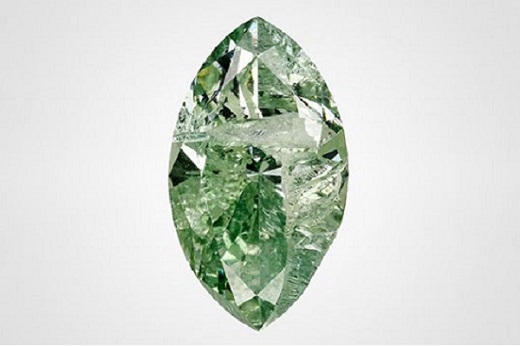GIA Spots Broken Diamond Glued Back Together
 RAPAPORT... The Gemological Institute of America (GIA) has identified a stonecomprising two halves of a diamond that had been stuck together with an "unknownadhesive." Graders noticed a large fracture and cavity on the table ofthe marquise-cut, 1.38-carat polished diamond submitted to the GIA's laboratory in Carlsbad, California, for colored-diamond testing. When thegemologists examined the crack under a microscope, they noticed a gap runningdown the stone from the crown to the pavilion, as well as a slight misalignmentin the facets and air bubbles inside the fracture. The polish lines on the stone's facets would have linked ifthere hadn't been a fracture, GIA gemologist Troy Ardon explained this month in a lab note in the latest edition of Gems & Gemology. For that reason, gemologistsdetermined that the stone had been broken in half after it was at leastpartially polished, and then repaired with an unidentified adhesive. "Diamonds have been adhered together with glue to form adiamond-doublet, but a broken diamond that has been repaired was not somethingpreviously reported by GIA," Ardon added. The GIA couldn't grade the diamond because the 4Cs wouldn'tapply to it, the note continued. A carat weight would have been meaningless, asit would have comprised the weight of both halves plus the adhesive. Image: Robison McMurtry/GIA
RAPAPORT... The Gemological Institute of America (GIA) has identified a stonecomprising two halves of a diamond that had been stuck together with an "unknownadhesive." Graders noticed a large fracture and cavity on the table ofthe marquise-cut, 1.38-carat polished diamond submitted to the GIA's laboratory in Carlsbad, California, for colored-diamond testing. When thegemologists examined the crack under a microscope, they noticed a gap runningdown the stone from the crown to the pavilion, as well as a slight misalignmentin the facets and air bubbles inside the fracture. The polish lines on the stone's facets would have linked ifthere hadn't been a fracture, GIA gemologist Troy Ardon explained this month in a lab note in the latest edition of Gems & Gemology. For that reason, gemologistsdetermined that the stone had been broken in half after it was at leastpartially polished, and then repaired with an unidentified adhesive. "Diamonds have been adhered together with glue to form adiamond-doublet, but a broken diamond that has been repaired was not somethingpreviously reported by GIA," Ardon added. The GIA couldn't grade the diamond because the 4Cs wouldn'tapply to it, the note continued. A carat weight would have been meaningless, asit would have comprised the weight of both halves plus the adhesive. Image: Robison McMurtry/GIA